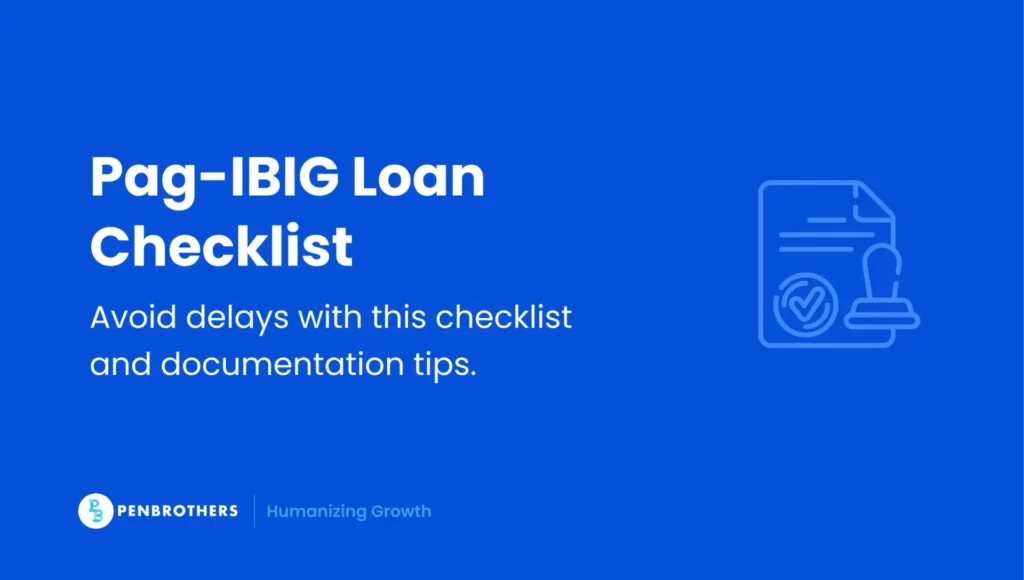Key Takeaways
- Remote Access Doesn’t Mean Reduced Benefits: Even if you work from home or overseas through a Philippine-registered employer, you remain fully entitled to Pag-IBIG loans as long as membership and contributions are compliant.
- Preparation is Key to Seamless Approval: Verifying contributions, securing employer certifications, and keeping digital copies of all documents drastically reduces delays and errors in loan processing.
- Compliance Protects Both Employees and Employers: Accurate documentation, timely submissions, and payroll alignment safeguard employees’ rights while shielding companies from legal risks and disputes.
Introduction
Access to financing through Pag-IBIG loans can be a lifeline for remote employees, whether for home improvements, emergency expenses, or personal needs. Yet, many remote workers remain unsure of eligibility rules, contribution requirements, and the correct documents needed. Confusion is common, particularly when companies operate across borders or use Employer of Record (EOR) arrangements.
This guide breaks down the Pag-IBIG loan requirements in practical, actionable terms. It covers eligibility, documentation, application steps, special remote considerations, and loan types. By the end, you’ll have a clear roadmap to successfully apply while staying fully compliant with Philippine labor law.
Who Is Eligible for a Pag-IBIG Loan?
Pag-IBIG loans are a statutory benefit for qualified members. Remote employees may assume that location or hybrid arrangements affect eligibility, but the law ensures protection as long as you are formally employed under a Philippine-registered entity or an EOR setup.
Key eligibility rules include:
- Active Membership: You must be a current Pag-IBIG Fund member. Dormant accounts or inactive memberships disqualify applicants.
- Contribution History: Standard eligibility requires at least 12 monthly contributions, though some loans like housing may require 24.
- Recent Contribution: At least one contribution must have been made within the last six months before your application.
- Loan Standing: Existing Pag-IBIG loans must be in good standing. Any defaults must be resolved before applying.
- Employment Status: Remote employees working under Philippine entities or through an EOR arrangement are fully covered, even if they never step foot in an office.
Example: Imagine Ana, a remote software engineer, employed through a Philippine-based EOR while living in Cebu. Because her employment is registered in the Philippines and her contributions are up to date, she is entitled to apply for a Multi-Purpose Loan (MPL) just like onsite employees.
What Documents Are Required?
Preparation is critical for a smooth application. The standard requirements include:
- Application Form: Completed Pag-IBIG Multi-Purpose Loan Application Form (MPLAF).
- Valid ID: One government-issued ID, such as a Passport or Driver’s License.
- Proof of Income: Payslips, Certificate of Employment and Compensation (CEC), or equivalent documentation.
- Pag-IBIG Cash Card: Either the Pag-IBIG Loyalty Card Plus or LandBank Cash Card.
- Selfie Photo: Some applications may request a clear photo holding your ID and cash card for verification.
For remote employees, digital copies of payslips and scanned IDs can often be submitted via the Virtual Pag-IBIG portal, minimizing the need for physical presence.
How to Apply for a Pag-IBIG Loan
You can submit applications online or in person:
- Virtual Pag-IBIG: Submit all documents electronically through the official portal.
- Branch Application: Visit a Pag-IBIG branch if online submission is not feasible.
- Processing Time: Applications are generally processed within 5–10 business days.
Tip: Ensure all contribution records are up to date and match employer submissions. Misaligned data is a common cause of delays.
Special Considerations for Remote Employees
Remote work introduces unique challenges:
- Employer Certification: Required for employed remote workers; freelancers may face hurdles obtaining this document.
- Contribution Verification: Always double-check your contributions via the Virtual Pag-IBIG portal.
- Digital Documentation: Maintain scanned copies of IDs, payslips, and other forms to facilitate faster processing.
Example: Luis, a remote marketing specialist, noticed discrepancies in his online Pag-IBIG contribution report. By flagging it to his employer before applying, he avoided a rejection and expedited his loan approval.
Loan Types and Their Requirements
- Multi-Purpose Loan (MPL): For personal expenses, education, or small home improvements. Minimum 12 contributions required.
- Housing Loan: For home purchase or renovation. Typically requires 24 contributions.
- Calamity Loan: For disaster-affected areas. Also requires 24 contributions.
Practical Application: A distributed team member living in Cebu can apply for the MPL to cover emergency medical expenses without traveling to the head office.
How Much Can You Borrow?
- Loan Limit: Up to 90% of your Total Accumulated Value (TAV).
- Repayment Terms: Options typically range from 1 to 3 years, with monthly deductions managed automatically through payroll.
Tip: Remote employees should coordinate with payroll teams to ensure proper deductions and avoid overpayment or missed remittances.
Frequently Asked Questions (FAQs)
Q1: Can remote employees apply for Pag-IBIG loans?
Yes, if employed under a Philippine-registered entity or EOR.
Q2: What if I have fewer than 12 contributions?
Some loans may still be accessible with exactly 12 contributions. Check the latest Pag-IBIG updates.
Q3: How do I verify contributions?
Use the Virtual Pag-IBIG portal to confirm your membership status and contribution history.
Q4: Can freelancers apply for Pag-IBIG loans?
Freelancers generally cannot, due to the requirement for formal employer certification.
Final Thoughts
Understanding Pag-IBIG loan requirements is essential, especially for remote employees navigating payroll and contribution verifications from afar. Beyond eligibility, proper documentation and alignment with payroll systems are critical to ensuring fast approval.
Partnering with a trusted HR and payroll provider ensures remote employees remain compliant, contributions are tracked accurately, and applications proceed smoothly. With expertise in Philippine labor law and benefits administration, organizations can confidently offer Pag-IBIG loans to their remote workforce while safeguarding compliance and employee satisfaction.






